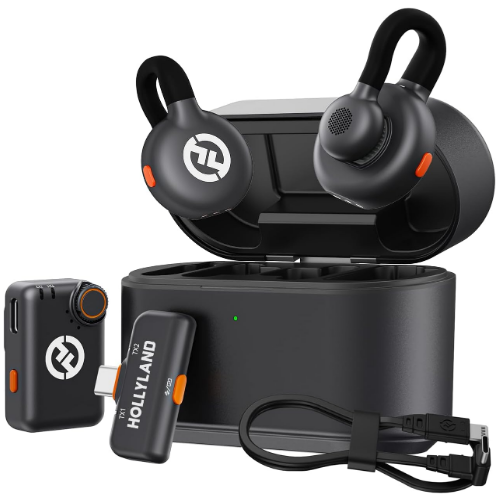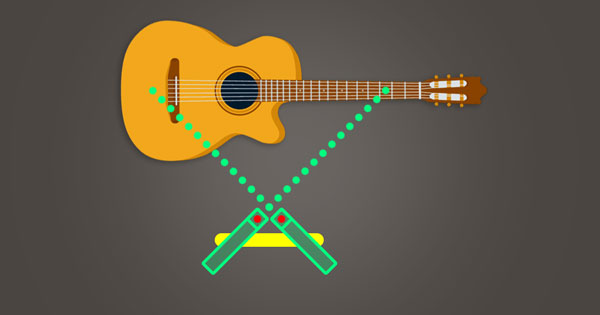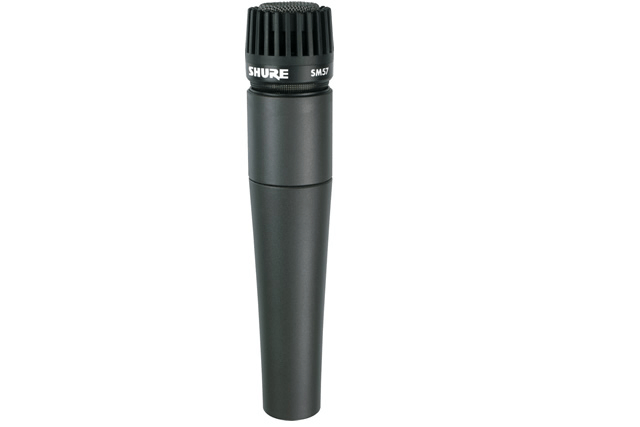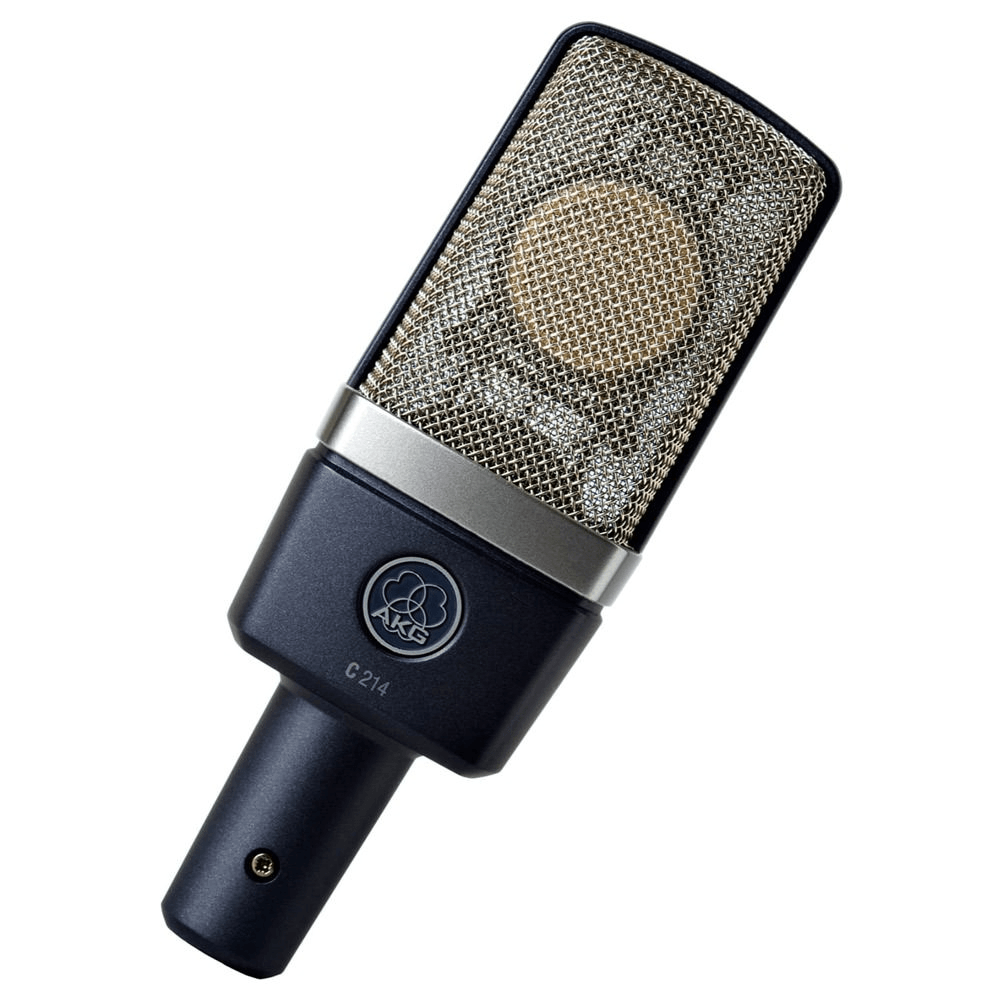Capturing the rich, natural tones of an acoustic guitar requires a microphone that not only accurately represents the instrument’s sonic character but also seamlessly interacts with the subtleties of each performance. A dynamic microphone, known for its durability, simplicity, and versatility, can be an excellent choice for both live performances and studio recordings of acoustic guitars. In choosing the best dynamic microphone, it is essential to consider factors such as sound quality, build, and how well it handles the acoustic guitar’s frequency range. Our upcoming listicle will guide you through the top picks, ensuring that whether you’re a gigging musician or a recording enthusiast, you’ll find the perfect match for your six-string companion.
When searching for the best dynamic microphone for recording acoustic guitar, it’s crucial to consider several characteristics that affect performance:
- Frequency Response: Look for a mic with a broad and flat frequency response to accurately capture the rich tonal range of an acoustic guitar.
- Polar Pattern: The polar pattern determines the mic’s sensitivity to sound from various directions. A cardioid pattern is ideal for isolating the guitar and minimizing background noise.
- Sensitivity and SPL Handling: Sensitivity measures how well the mic picks up quiet sounds, while SPL (Sound Pressure Level) handling refers to the maximum volume it can capture without distortion. Both should be sufficient for the nuanced dynamics of an acoustic guitar.
- Durability: Given that dynamic mics are often used in live settings, robust construction is vital for withstanding use and potential mishaps.
- Versatility: A versatile mic can be useful for recording other instruments or vocals, providing more value for your investment.
- Price: While the adage “you get what you pay for” often holds true, there are great-performing microphones at various price points.
With these criteria in mind, I will review the best available dynamic microphones suited to enhance your acoustic guitar recordings.
Please note that prices are subject to change, and it is advisable to check a reliable retailer for current pricing. The specs listed are general attributes—users should test the microphones with their specific acoustic guitars since the interaction between the microphone and the guitar can greatly influence the recorded sound.
Here’s a simplified comparison table:
| Microphone | Approx. Price (USD) | Polar Pattern | Frequency Response | Sensitivity | Notable Features |
|---|---|---|---|---|---|
| Shure SM57 | $99 | Cardioid | 40 Hz – 15 kHz | -56.0 dBV/Pa | Extremely durable, industry standard for instruments |
| Sennheiser e906 | $190 | Supercardioid | 40 Hz – 18 kHz | -2.2 mV/Pa | Flat shape for easy placement, switchable presence filter |
| Beyerdynamic M160 | $700 | Hypercardioid | 40 Hz – 20 kHz | -59.0 dBV/Pa | Double ribbon design, often used for strings and brass |
| Audix i5 | $100 | Cardioid | 50 Hz – 16 kHz | -1.9 mV/Pa | Versatile, clear and accurate sound for many applications |
| Electro-Voice RE20 | $450 | Cardioid | 45 Hz – 18 kHz | -56.0 dBV/Pa | Variable-D for minimal proximity effect, widely used for broadcasting |
Keep in mind that while specs can provide guidance, the best way to choose a microphone is often to test it with your particular instrument and in your specific recording environment to see (and hear) how it performs.
Shure SM57

The Shure SM57 is an iconic dynamic microphone that’s often the go-to choice for musicians and audio engineers around the world. While it’s famed for its ability to capture the punch of a snare drum or the roar of an electric guitar, the SM57 also does an exceptional job with acoustic guitars. This mic is known for its durability and versatility, and it’s surprisingly adept at picking up the nuanced tones of an acoustic guitar, delivering a clear, professional sound that’s balanced and true to the instrument’s natural timbre.
When using the SM57 for acoustic guitar, what strikes me most is its ability to reject off-axis sound, which enhances focus on the guitar’s sound hole and fretboard nuances. Moreover, the mic’s cardioid polar pattern means that it picks up sound primarily from the front, which is perfect for isolating your instrument in a live setting or a crowded mix.
Specs:
- Type: Dynamic
- Polar Pattern: Cardioid
- Frequency Response: 40Hz-15kHz
- Output Impedance: 150 ohms
- Connector: XLR
Pros:
- The SM57’s robust construction means it can handle the rough and tumble of studio and stage work, making it a reliable tool for rigorous recording sessions.
- It excels at delivering a clean and natural representation of an acoustic guitar, capturing the bright sparkle as well as the deeper body resonance without undue coloration.
- It’s highly directional, which is great for eliminating background noise and focusing on the guitar playing.
- The SM57 is quite affordable, especially considering its professional-grade performance, making it accessible for both amateur and professional recording settings.
Cons:
- Some may find that the SM57’s tailored frequency response slightly limits the perception of air and sparkle at the very top end, which could be a drawback if you prefer a brighter sound.
- It requires careful positioning to get the best sound out of an acoustic guitar since it has a less nuanced capture compared to some condenser mics that are specifically designed for acoustic instruments.
Price:
The Shure SM57 typically retails between $90 – $100. This is incredible value for a microphone that has stood the test of time and continues to be a staple in recording studios and live sound setups worldwide.
In conclusion, the Shure SM57’s reputation for toughness and the quality of its audio capture extend effortlessly to acoustic guitar recording. Its focused pickup pattern and ability to handle high sound pressure levels with ease, without compromising sound quality, make it an unexpectedly fitting choice for acoustic guitarists looking for a reliable and budget-friendly microphone.
Certainly! Here’s the breakdown for product 2, the Sennheiser e906, designed particularly for your audience who may not be familiar with technical audio equipment details.
Sennheiser e906

Overview:
The Sennheiser e906 is a dynamic microphone that’s carved a niche for itself in the world of guitar recording. Its sleek design is not just for looks – it’s crafted specifically for close miking instruments, particularly guitar amps, but it has the versatility and sonic quality to make it a fantastic choice for acoustic guitar recording as well. Through my experience, the e906 stands out with its natural sound reproduction, detailed mids, and a presence boost that brings the intricacies of acoustic guitar playing to the forefront.
Specs:
- Transducer principle: Dynamic
- Polar pattern: Supercardioid
- Frequency response: 40 – 18,000 Hz
- Connector: XLR-3
- Switchable presence filter: Three positions (Boost, Normal, Cut)
Pros:
- Flat shape perfectly suited for guitar amps and tight spaces.
- The presence filter switch adjusts the mic character for versatility.
- Offers a natural and transparent sound capturing the nuances of an acoustic guitar.
- Excellent side noise rejection due to its supercardioid pattern.
Cons:
- Fixed cable could be a downside if damaged (though fairly uncommon for this model).
- It can be a bit too directional for some applications, which might restrict its use in a broader recording set-up.
Price:
The e906 comes in at a mid-range price point – not the cheapest mic you’ll find, but for its quality and performance, it provides good value for money. You’re paying for a robust, tour-ready piece of equipment that has the potential to elevate your acoustic guitar recordings.
While there are many microphones out there, the Sennheiser e906’s combination of durability, quality, and tonal clarity makes it a contender for one of the best dynamic microphones for capturing the essence of an acoustic guitar. It’s a piece of tech that promises professionalism without requiring you to be a sound engineering wizard to get the best out of it – a balance that’s hard to strike and yet, the e906 does it with aplomb.
Beyerdynamic M160

The Beyerdynamic M160 stands out from its peers with its unique hypercardioid design and classic ribbon construction, which offers a warm and natural sound profile that acoustic guitar enthusiasts are bound to appreciate. Unlike the typical dynamic microphones which tend to favor the midrange frequencies, the M160 boasts a level of detail and clarity that can rival even some studio condenser microphones.
Its double ribbon element captures the intricacies of an acoustic guitar wonderfully, translating the body and character of the instrument through the speakers with an open, airy top end and a solid, well-defined bass response. The hypercardioid pattern is quite focused, which helps in isolating your guitar sound from other instruments or ambient noise in the room.
Being a ribbon mic, it imparts a vintage coloration to the sound, which is often sought after in studio recordings for its musical warmth. However, the M160 isn’t just for the studio; its sturdy build and rejection of off-axis sounds make it surprisingly viable for live use as well.
Specs:
- Microphone Type: Double Ribbon (Hypercardioid)
- Frequency Response: 40Hz-18kHz
- Maximum SPL: 130dB
- Output Impedance: 200 ohms
- Connector: XLR
Pros:
- Exceptional sound quality with a natural, warm character that complements acoustic guitars.
- Hypercardioid pattern offers excellent sound isolation.
- Versatile for both studio and live situations.
- Robust build quality inherent to Beyerdynamic products.
Cons:
- More delicate due to the ribbon design; requires careful handling.
- Higher price point than typical dynamic microphones.
- Might require a high-quality preamp to get the best out of it due to its low output.
Price:
When considering its performance and quality, the Beyerdynamic M160 falls into the mid-to-high price range for dynamic microphones. Its price reflects its specialized nature and professional performance, making it a significant investment for musicians and engineers who are serious about capturing the best possible acoustic guitar sound. However, the M160 is not merely a purchase, but an investment in sound quality that can elevate recordings from good to great.
In my opinion, the Beyerdynamic M160 is a fantastic choice for anyone looking to capture the true essence of an acoustic guitar. While it might require a bit more care and potentially additional equipment (like a suitable preamp), the sonic rewards justify the investment. This microphone is a solid performer that can make a substantial difference in both live settings and recordings, providing that professional edge to your acoustic sound.
Audix i5 Instrument Microphone

The Audix i5 is a versatile and sturdy dynamic microphone designed to handle a wide array of sound sources with incredible accuracy and detail. While it’s often seen as a go-to mic for snare drums and electric guitars in the studio and on stage, its true potential shines when capturing the nuanced tones of an acoustic guitar.
Overview:
Upon unboxing the Audix i5, I was immediately struck by its compact size and solid construction, which speaks to its durability and ease of placement. When I first used it to mic an acoustic guitar, the i5 captured the core of the guitar’s tone beautifully, emphasizing a clear midrange without forsaking the sparkling highs or full-bodied lows.
Recording in a home studio setup, the i5’s cardioid pickup pattern effectively rejected off-axis noise and prevented bleed from other instruments, which is pivotal in multi-mic configurations. The i5, with its focused audio capture, allowed for precision when dialing in the desired guitar sound within a mix.
Specs:
- Transducer Type: Dynamic
- Polar Pattern: Cardioid
- Frequency Response: 50 Hz – 16 kHz
- Output Impedance: 150 ohms
- Maximum SPL: ≥140 dB
- Connector: 3-pin XLR
Pros:
- Exceptional clarity and balance for acoustic guitar.
- Robust build capable of enduring regular use.
- Effective off-axis noise rejection ideal for studio or onstage use.
- Offers great value, bringing professional quality without an exorbitant price tag.
- Its compact size allows for easy positioning and low visual profile, which is great for video sessions or crowded stage setups.
Cons:
- Some may find the high-end response not as crisp compared to condenser microphones, potentially requiring additional EQ adjustment in post-production.
- The presence boost around the midrange may require careful placement to avoid overly aggressive tones for certain acoustic guitar types.
Price:
The Audix i5 sits comfortably in the mid-range price segment for dynamic microphones. It provides a competitive option for both amateur recording artists and professional studio engineers who are conscious of budget without compromising on quality. Prices can vary, but it typically retails between $90 to $120.
In my opinion, the Audix i5 is a hidden gem for acoustic guitar recording. While dynamic mics are not always the first choice for acoustic instruments, the i5 challenges this notion with its clarity and versatility. Its performance-to-price ratio makes it not only an affordable choice but also a smart investment for any musician looking to capture the natural sound of their guitar, whether in a home studio or a professional recording environment.
Electro-Voice RE20 Dynamic Microphone

The Electro-Voice RE20 is a legendary dynamic microphone that’s been a staple in the broadcasting industry for decades. While traditionally used for vocals, this microphone excels when used to record acoustic guitar. It’s particularly renowned for its ability to handle high-pressure sound levels and capture the subtle nuances of an acoustic guitar without introducing unwanted noise.
Specs
The key specs for the Electro-Voice RE20 include a cardioid polar pattern that helps to isolate the sound of the guitar from room noise, a Variable-D design that minimizes proximity effect, and an internal pop filter to reduce p-popping sounds. Its broad frequency response, from 45 Hz to 18 kHz, is also tailored to deliver detailed and full-bodied sound.
Pros:
- The RE20 offers a natural and transparent sound quality, capturing the guitar’s nuances without adding coloration.
- Its Variable-D technology ensures that sound clarity is maintained regardless of how close the source is to the microphone, which is great for capturing consistent levels during dynamic playing.
- The built-in pop filter and shock mount system virtually eliminate handling noise and plosive sounds, making it ideal for recording scenarios.
- Exceptional at rejecting off-axis sound, this mic allows for great separation if you’re recording in an environment with multiple instruments.
Cons:
- It’s on the heavier side, so ensuring you have a robust mic stand is a must.
- The price point might be a bit steep for hobbyists or those just starting out in sound recording.
- It may require a decent preamp to get the best out of it, as dynamic mics generally have lower output levels compared to condenser mics.
Price
The price for an Electro-Voice RE20 usually falls into the mid-range bracket for professional microphones, often exceeding the cost of general-purpose dynamic mics like the Shure SM57. Expect to budget a significant amount for this high-quality microphone.
In my opinion, the Electro-Voice RE20 is worth the investment for anyone serious about recording acoustic guitar. The sound quality is superb, the build is reliable, and its versatility in a studio environment is unparalleled. It might be a little more than some are looking to spend, but for the discerning ear, it’s an excellent choice that justifies its cost over time.
Conclusion:
In summary, selecting the best dynamic microphone for your acoustic guitar involves balancing factors such as sound capture fidelity, durability, and budget. Whether you’re a gigging musician, recording at home, or setting up a studio, there’s an option out there that will meet your needs. Remember, the right microphone will not only capture the natural tone of your guitar but also elevate your music, making your acoustic performances come to life. Consider your individual circumstances and use this list as a starting point to find the perfect dynamic microphone to enhance your acoustic guitar’s sound.
Capturing your acoustic guitar clearly often demands flexible microphone placement options and minimal cable clutter. To achieve freedom on stage or in the studio with pristine, natural acoustics, consider complementing your setup with a wireless lavalier microphone designed specifically for crisp and detailed guitar recordings.
Best Seller
Sale

Hollyland LARK M2S – Wireless Clip-on Microphone
- 7g Lightweight, Titanium Clip, Discreet Design
- Clear sound with 24-bit/48kHz, 70dB SNR, 116dB SPL
- Noise Cancellation & 300m Long-Range Stability
- Works with Camera/iPhone/Android/Laptop
- Perfect for Content Creators, Online-Teaching, Streaming
$139
$159
FAQs:
- Why would I choose a dynamic microphone over a condenser for recording acoustic guitar?
Dynamic microphones are often chosen for their durability, ability to handle high sound pressure levels, and typically lower cost compared to condenser microphones. They are excellent for live settings and can also be a good fit in a studio, especially when capturing the warmth and body of an acoustic guitar. - Do I need a preamp with a dynamic microphone for my acoustic guitar?
While dynamic microphones generally don’t require phantom power, a good preamp can certainly enhance the signal quality, providing more headroom and clarity to your guitar’s sound. Whether you need a preamp will depend on your recording setup and the sound you’re aiming to achieve. - Can dynamic microphones handle both live performances and studio recordings for acoustic guitars?
Yes, dynamic microphones are versatile and can be used effectively in both live and studio settings. While they might not capture the same level of detail as condenser microphones in a controlled studio environment, they are less sensitive to background noise, making them a reliable choice for live performances.
































.png)









